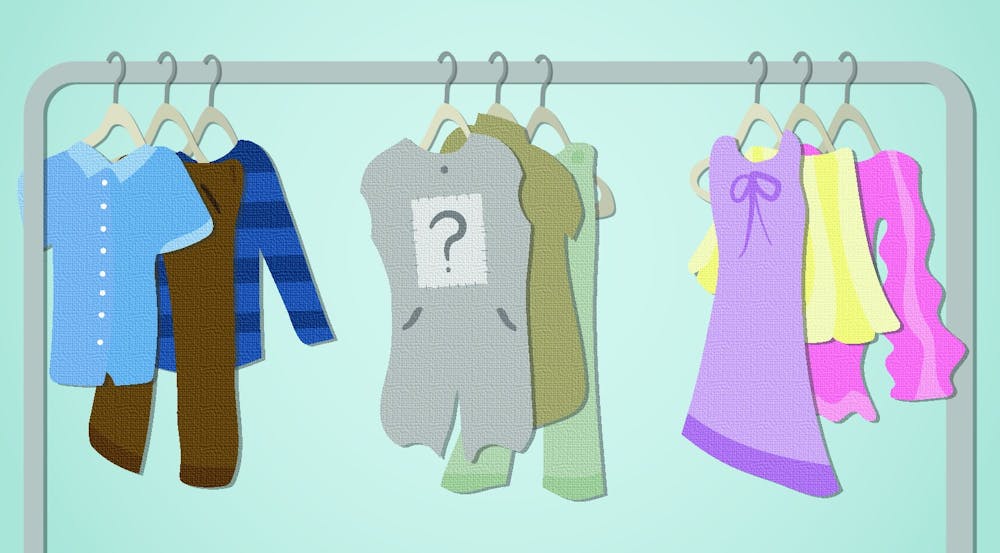In the past few years, gender-neutral clothes have been on the rise, as many luxury brands like Louis Vuitton and Gucci have added gender-neutral collections to their catalog.
Gender-neutral clothes for kids are also popular, and some parents have vowed to only dress their children in gender-neutral clothing.
A quick Google search for gender-neutral clothes finds mostly oversized, boxy clothes that lack color and look suspiciously like men’s fashion under a different label.
And a search for gender-neutral clothes for babies leads you to an endless supply of neutral colored onesies – grays, whites, browns, muted greens and blues.
How did this become what “gender-neutral” means? And why do we feel the need to assign the labels of mens, womens or gender-neutral to clothes?
When Zara launched its unisex line in 2016, some people viewed it as a victory against gender norms. Others questioned Zara’s definition of “gender-neutral,” as most of the clothes looked like they could be found in a men’s store. The “Ungendered” collection can no longer be found on their website.
Far too often, gender-neutral lines tend to lean on the side of masculinity because it’s viewed as more “neutral” than femininity. It’s also more generally acceptable for a woman to wear “men’s clothes” than for a man to wear “women’s clothes.”
Everyone has a unique sense of style, regardless of, and not reliant on, their gender. Some women feel empowered by wearing men’s clothes. Some men feel empowered by wearing women’s clothes. Some nonbinary people feel empowered by wearing a combination of both; others have a preference.
Making a third arbitrarily gendered category for fashion defeats the purpose of gender neutrality. Instead of making gender-neutral its own category, we should get rid of meaningless labels and acknowledge that all clothes are gender-neutral.
We don’t need gender-neutral clothes if we don’t have men’s or women’s or girl’s or boy’s clothes.
Creating supposedly gender-neutral clothes also feels like a fake-woke way to acknowledge the breadth of gender identities that more and more people are identifying with.
It seems like a commodification of identity over anything else, turning “gender-neutral” into a buzzword that will make your company seem progressive and inclusive.
Enjoy what you're reading?
Signup for our newsletter
Gender is a spectrum, not a binary or even a trinary. The same idea can be applied to fashion.




